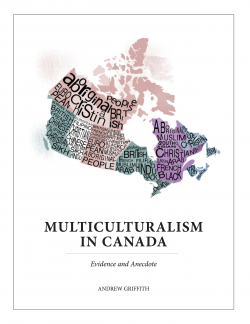Library Association pulls award for RMC professor’s book
2024/04/26 Leave a comment
Lubomyr was one of my interlocutors when negotiating the Canadian First World War Internment Recognition Fund and was the more activist of the three so not totally surprising to see this controversy:
The largest library association in the world has pulled an award for a book co-edited by a Royal Military College professor over concerns it whitewashes Nazi collaborators and war criminals.
In late January, the American Library Association honoured the book, Enemy Archives, edited by Royal Military College professor Lubomyr Luciuk and Ukrainian historian Volodymyr Viatrovych, on its list of the best historical materials for 2022 and 2023.
But the book has been criticized by a Jewish organization and Holocaust scholars who have raised concerns it whitewashes Nazi collaborators in Ukraine during the Second World War.
The association has now retracted the award and is investigating how the book came to be honoured in the first place.
“We apologize for the harm caused by the work’s initial inclusion on the list,” Jean Hodges, director of communications for the library association, said in a statement.
“The committee will be reviewing the award manual and procedures,” she added.
Luciuk, in an email to this newspaper, noted the library association’s decision was “perplexing” and added that journalists should read the book lest they “misrepresent” it.
Viatrovych did not respond to requests for comment.
The Friends of Simon Wiesenthal Center, which promotes Holocaust education, welcomed the decision by the American Library Association.
“It is very disappointing to see that some are willing to use this moment of great public support for Ukraine in its fight against Russian aggression as an opportunity to re-write Ukrainian history, and specifically to whitewash the involvement of Ukrainian nationals in the commission of genocide against Ukrainian Jewry,” said Jaime Kirzner-Roberts, senior director for policy and advocacy at the center. “This book got a platform it never deserved given the outright misinformation it contains, and we are glad to see this problem being rectified as institutions take a closer look at the book and its dangerous and outrageous claims.”
Enemy Archives: Soviet Counterinsurgency Operations and the Ukrainian Nationalist Movement – Selections from the Secret Police Archives discusses the Organization of Ukrainian Nationalists as well as the Ukrainian Insurgent Army. Some Ukrainians see those who belonged to those organizations as heroes who fought against the Soviets.
Some Holocaust scholars, Jewish organizations, and the Polish government have labelled those individuals as Nazi collaborators who were involved in the murders of up to 100,000 Poles and Jews.
The National Post published an excerpt from Enemy Archives on Feb. 9, 2023, prompting criticism from the news agency, the Jewish News Syndicate, as well as the Friends of Simon Wiesenthal Center.
Rob Roberts, editor-in-chief of the National Post, told the Jewish News Syndicate at the time that “the excerpt included a paragraph disputing the view that the Second World War era Organization of Ukrainian Nationalists were Nazi collaborators. However, we recognize that this collaboration has been established by prior scholarship.”
Luciuk told JNS that “the so-called ‘Friends of the Simon Wiesenthal Center’ should read the book. They obviously haven’t.”
McGill-Queens University Press, which published the book, stated that Enemy Archives was rigorously examined before being released. “The path of Ukrainian nationalism, and its intersections with Jewish history over the past century, is often challenging and difficult to reconcile, with significant impacts on current political events in the region,” noted Lisa Quinn, executive director of McGill‐Queen’s University Press. “There are inherent yet necessary risks in this area of study, and to participating in the contentious academic and public debates about how to tell these histories to advance understanding of both the past and present.”
Per Anders Rudling, a professor at Lund University in Sweden who has extensively studied the issue of Nazi collaborators, issued a statement about the book, noting “I am frankly surprised McGill Queen’s Press (would) lend itself to this form of memory activism.”
National Defence sent an email noting the views expressed are entirely those of Luciuk and his co-authors and the professor has the right of academic freedom.
Supporters of the book have focused much of their anger on Ukrainian-Jewish writer Lev Golinkin, who they blame for the American Library Association’s decision to pull the award.
Golinkin wrote an April 10 article in the U.S. publication, The Nation, arguing the book was whitewashing Nazi collaborators.
The Council of the Ukrainian Library Association and another related group launched an appeal of the American Library Association’s decision. They claimed Golinkin, who has taken part in protests against Russia, is pushing pro-Russian propaganda.
Viatrovych also shared a social media response in which a Ukrainian pointed out that Golinkin is a Jew and a parasite.
That same account also accused another Ukrainian Jew, who has spoken out about the history of Nazi collaborators, of being a parasite.
Nazi leader Adolf Hitler referred to Jews as parasites to justify their destruction.
Source: Library Association pulls award for RMC professor’s book
